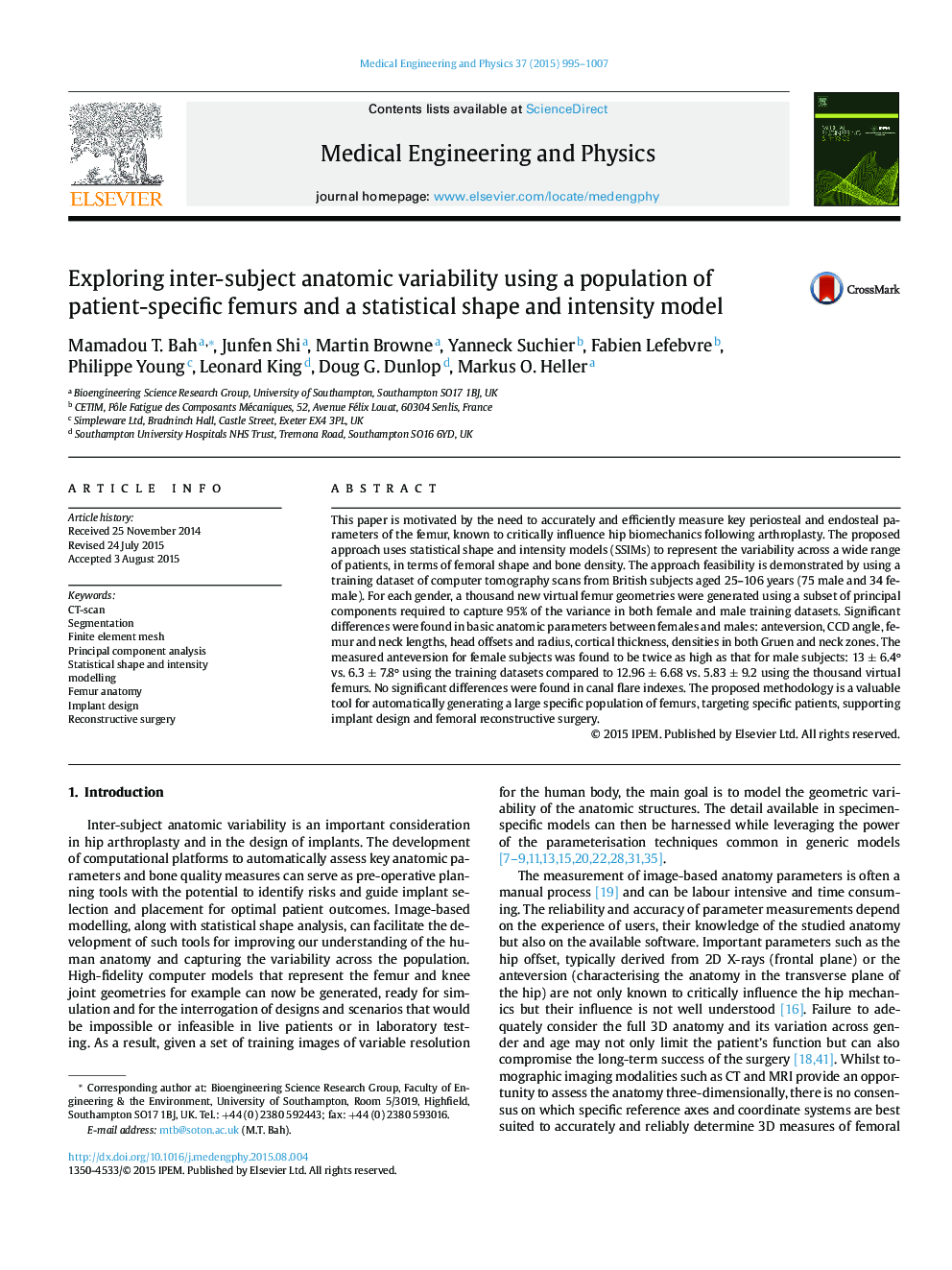| کد مقاله | کد نشریه | سال انتشار | مقاله انگلیسی | نسخه تمام متن |
|---|---|---|---|---|
| 875719 | 910797 | 2015 | 13 صفحه PDF | دانلود رایگان |
• Gender-based statistical shape and intensity femur model using 109 segmented bones.
• Automatic generation of new femurs with volume mesh and bone density.
• Automatic measurement of 30 key periosteal and endosteal parameters of femur.
• Significant differences in basic anatomic parameters between females and males.
• Tool to support implant design and reconstructive surgery.
This paper is motivated by the need to accurately and efficiently measure key periosteal and endosteal parameters of the femur, known to critically influence hip biomechanics following arthroplasty. The proposed approach uses statistical shape and intensity models (SSIMs) to represent the variability across a wide range of patients, in terms of femoral shape and bone density. The approach feasibility is demonstrated by using a training dataset of computer tomography scans from British subjects aged 25–106 years (75 male and 34 female). For each gender, a thousand new virtual femur geometries were generated using a subset of principal components required to capture 95% of the variance in both female and male training datasets. Significant differences were found in basic anatomic parameters between females and males: anteversion, CCD angle, femur and neck lengths, head offsets and radius, cortical thickness, densities in both Gruen and neck zones. The measured anteversion for female subjects was found to be twice as high as that for male subjects: 13 ± 6.4° vs. 6.3 ± 7.8° using the training datasets compared to 12.96 ± 6.68 vs. 5.83 ± 9.2 using the thousand virtual femurs. No significant differences were found in canal flare indexes. The proposed methodology is a valuable tool for automatically generating a large specific population of femurs, targeting specific patients, supporting implant design and femoral reconstructive surgery.
Journal: Medical Engineering & Physics - Volume 37, Issue 10, October 2015, Pages 995–1007
